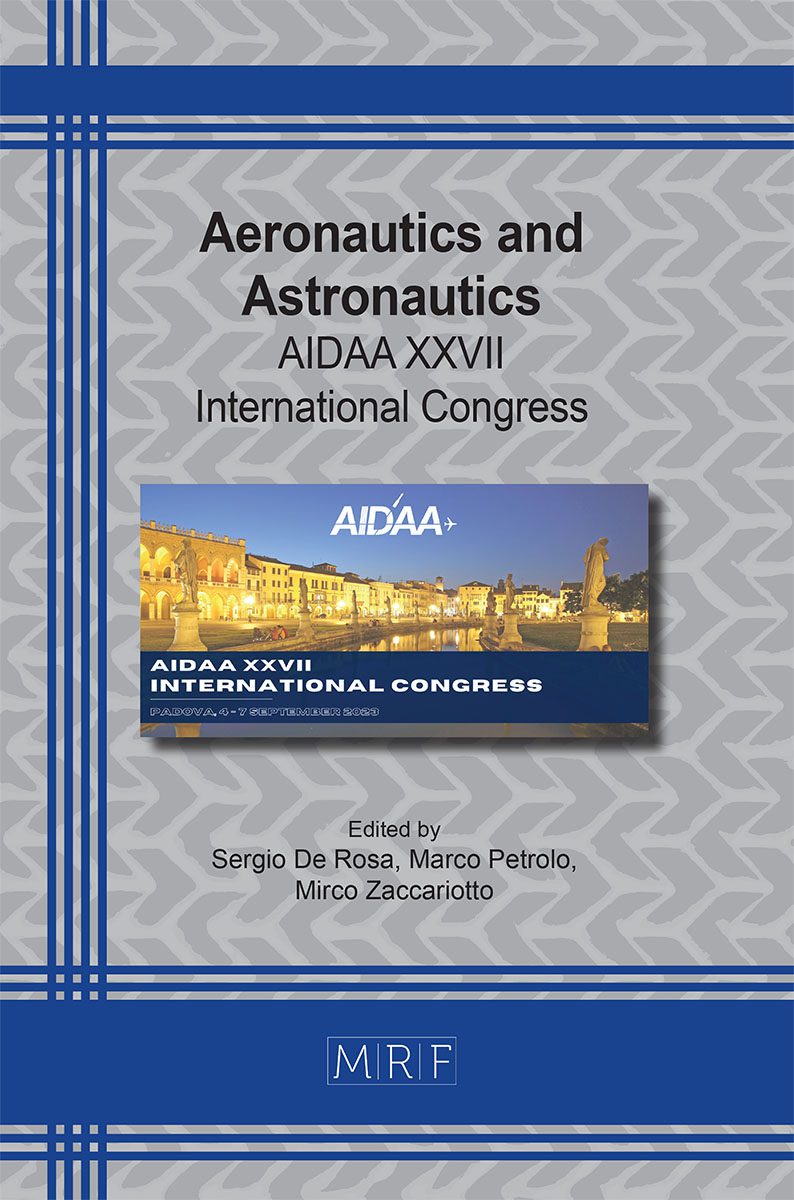A parametric model for thermal management system for more electric and hybrid aircraft
Sofia Caggese, Marco Fioriti, Flavio Di Fede
download PDFAbstract. In the last decade, the hybrid and electric propulsive systems have been gaining increasing interest to cut down greenhouse gas emissions and thus reduce the environment impact of the aerospace sector. The paper reports the development of a parametric model to design and simulate the Thermal Management System (TMS) of an hybrid electric regional aircraft. Considering the need for a compact design and avoiding the generation of additional drag, a liquid-to-liquid offset strip fin surface heat exchanger is selected. Analysis and modelling of the system are performed for both traditional and innovative coolant, namely, as nanofluids. Five different thermal load conditions are analyzed, which correspond to five different levels of hybridization defined in terms of reduction of CO2 emission. The most demanding one entails a reduction up to 50% of CO2 and a thermal load of 67.2 kW to be dissipated. The paper also aims to investigate the most challenging conditions for TMS design and whether the suitability of nanofluids as superior heat carriers. In fact, using nanofluids it is possible to reduce the size of heat exchanger, thanks to the higher thermal conductivity compared to conventional coolant.
Keywords
Thermal Management System, Hybrid Aircraft, Liquid-to-Liquid Heat Exchanger, Nanofluid
Published online 11/1/2023, 4 pages
Copyright © 2023 by the author(s)
Published under license by Materials Research Forum LLC., Millersville PA, USA
Citation: Sofia Caggese, Marco Fioriti, Flavio Di Fede, A parametric model for thermal management system for more electric and hybrid aircraft, Materials Research Proceedings, Vol. 37, pp 76-79, 2023
DOI: https://doi.org/10.21741/9781644902813-17
The article was published as article 17 of the book Aeronautics and Astronautics
![]() Content from this work may be used under the terms of the Creative Commons Attribution 3.0 license. Any further distribution of this work must maintain attribution to the author(s) and the title of the work, journal citation and DOI.
Content from this work may be used under the terms of the Creative Commons Attribution 3.0 license. Any further distribution of this work must maintain attribution to the author(s) and the title of the work, journal citation and DOI.
References
[1] ICAO, 2019 Environmental Report, Aviation and Environment, https://www.icao.int/environmental-protection/Documents/ICAO-ENV-Report2019-F1-WEB%20(1).pdf
[2] https://eur-lex.europa.eu/legal-content/EN/TXT/HTML/?uri=CELEX:52019DC0640
[3] A.S.J. van Heerden, D.M. Judt, S. Jafari, C.P. Lawson, T. Nikolaidis, D. Bosak, Aircraft thermal management: Practices, technology, system architectures, future challenges, and opportunities, (2021). https://doi.org/10.1016/j.paerosci.2021.100767
[4] J. E. Hesselgreaves, R. Law, D. Reay, Compact Heat Exchangers. Selection, Design and Operation, 2nd ed., Elsevier Ltd, 2017. https://doi.org/10.1016/B978-0-08-100305-3.00002-1
[5] https://www.clean-aviation.eu/about-us/who-we-are
[6] S. K. Das, S. U. S. Choi, W. Yu, T. Pradeep, NANOFLUIDS, Science and technology, Wiley, 2008. https://doi.org/10.1002/9780470180693












